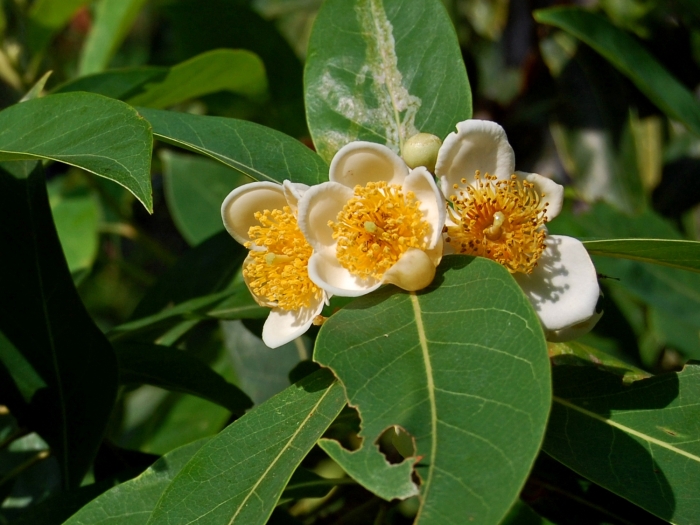Needlewood Tree
(Schima wallichii)
Needlewood Tree (Schima wallichii)
/
/

Wibowo Djatmiko (Wie146)
CC BY-SA 3.0
Image By:
Wibowo Djatmiko (Wie146)
Recorded By:
Copyright:
CC BY-SA 3.0
Copyright Notice:
Photo by: Wibowo Djatmiko (Wie146) | License Type: CC BY-SA 3.0 | License URL: https://creativecommons.org/licenses/by-sa/3.0 | Uploader: Wie146 | Publisher: Wikimedia Commons | Title: Schim_walli_081205-4283_F_stgd.jpg | Notes: == {{int:filedesc}} == =={{int:filedesc}}== {{Information |Description=KRT3951 |Source=[https://www.flickr.com/photos/66951228@N07/6279454997/ Schoenoplectus pungens] |Date=2009-12-13 16:02 |Author=[https://www.flickr.com/people/66951228@N07 Kevin





























Estimated Native Range
Summary
Schima wallichii, commonly known as Needlewood Tree, is an evergreen tree native to the montane forests and mixed broadleaf-coniferous woodlands of Southeast Asia, including the Himalayas, Indochina, and southern China. It can reach a height of 20-30 feet (6-9 meters) and a width of 10-20 feet (3-6.1 meters), with a dense, rounded canopy. The Needlewood Tree is known for its glossy, dark green leaves and its white, fragrant flowers that bloom in the spring, which are followed by woody, brown fruit capsules. The flowers are moderately showy and attract pollinators.
The Needlewood Tree is valued for its ornamental features, including its attractive foliage and springtime floral display. It is used in tropical and subtropical landscapes for shade, as a specimen tree, or in mixed plantings. It requires consistently moist soil, but is somewhat adaptable to different soil types, provided they have good drainage. While it thrives in full sun to part shade, it benefits from some protection from the hottest afternoon sun in warmer climates. There are no major disease or pest issues, but it is not tolerant of frost, limiting its use in colder regions.CC BY-SA 4.0
The Needlewood Tree is valued for its ornamental features, including its attractive foliage and springtime floral display. It is used in tropical and subtropical landscapes for shade, as a specimen tree, or in mixed plantings. It requires consistently moist soil, but is somewhat adaptable to different soil types, provided they have good drainage. While it thrives in full sun to part shade, it benefits from some protection from the hottest afternoon sun in warmer climates. There are no major disease or pest issues, but it is not tolerant of frost, limiting its use in colder regions.CC BY-SA 4.0
Plant Description
- Plant Type: Tree
- Height: 20-30 feet
- Width: 10-20 feet
- Growth Rate: Moderate
- Flower Color: White
- Flowering Season: Spring
- Leaf Retention: Evergreen
Growth Requirements
- Sun: Full Sun, Part Shade
- Water: Medium, High
- Drainage: Medium
Common Uses
Low Maintenance
Natural Habitat
Montane forests and mixed broadleaf-coniferous woodlands
Other Names
Common Names: Needlewood, Schima, Schima Tree, Simartolu, Puspa, Medang Gatal, Samak, Mang Tan, Hong Mu He
Scientific Names: , Schima wallichii, Schima bancana, Schima antherisosa, Schima forrestii, Schima hypochra, Schima lowii, Schima rigida, Schima wallichii var. obtusata,
GBIF Accepted Name: Schima wallichii (DC.) Korth.